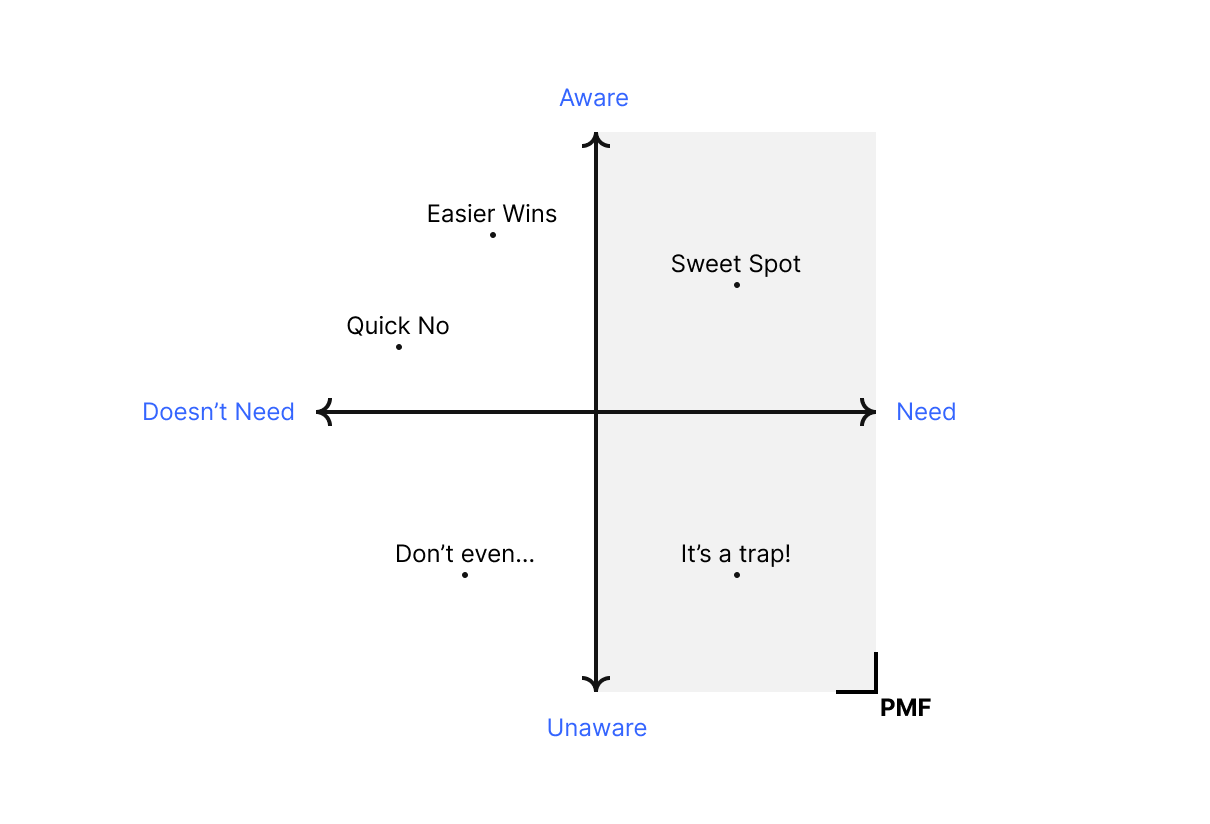

While early-stage founders feel compelled to help prospects with the most pain first, they shouldn’t.
In SaaS, most startups begin with a major industry problem to solve or processes to align. Because founders are passionate about helping those with the most pain, they target companies with noticeable evidence of big problems from the outside. The problem is that these companies are often the worst customers for early-stage startups. By the very nature of having deep problems — problems that someone on the outside could see in plain sight — they likely aren’t aware of the extent of the problems and thus, won’t be open to solutions. Or, they are aware they have problems but are too busy dealing with them they can’t buy.
As a result, founders and early-stage sales teams spend an inordinate amount of time working the deep problem deals.
The deals inflate the projected pipeline but end up sinking the company by sucking in resources from marketing, product and sales over months. And in the end, these prospects are often unable or unwilling to buy.
These deals fall through because customers are unaware that a potential solution to their problems could even exist.
In fact, SEO doesn’t work in these cases because potential customers aren’t searching for answers when they’re unable to define the problem. As a result, founders will need to invest in prospect education over time.
While most founders are aware of the innovation curve and the term “early adopters,” they don’t focus enough on the psychographic profile of early adopters. The early adopters aren’t often the ones with the biggest problems. Paradoxically, they don’t feel the most pain because they have a champion internally who has already found some success solving the problem themselves.
Founders should target problem-aware companies that are educated about the problem because they’re already trying to solve it.
I’ve found it helpful to frame initial sales and marketing strategies with the following diagram where I plot Need and Awareness on the X and Y-axes, respectively.

The shaded area is product-market fit (PMF). Customers in this quadrant have a need that matches the value being sold. But actually achieving PMF or more importantly, initial traction, is where the nuance lies.
Many founders seek need at the expense of awareness, but this is a trap.
The founder wastes too many marketing and sales resources building awareness through a sales process because they see the need. But the prospect’s need, coupled with lack of awareness, makes this is a challenging sale.
Early-stage startups find initial success in the top-left quadrant where awareness is high and need is low. Prospects in the top-left quadrant don’t feel a huge need either due to the firm itself (Quick No), or because there’s a thought leader in the organization already solving the problem (Easier Wins). It takes time to identify these qualities. But in the meantime, it’s okay for founders to seek easier wins because those buyers will help push the product in new directions while validating hypotheses.
In parallel, the founder has to determine what qualities indicate low need, and thus, become “Quick No’s.” Failure to do will result in “bad customers” that converted but don’t fit the SaaS company’s thesis and drag the company down later.
The Sweet Spot, prospects that have high awareness and high need, is where early-stage founders should focus.
If founders start with high awareness and low need, they’ll eventually win the sweet spot. In other words, sell from the top-left into the top-right. As founders build quick wins, refine the product and update messaging, they’ll capture the attention of new buyers that have real need. In funding terms, this often happens around the Series A timeframe.
Eventually, the startup will scale their marketing and sales teams to move into the bottom-right quadrant where need is high and awareness is low.
This is where lucrative opportunity exists, but it takes years to fully prime, both through content marketing and use cases that speak to this quadrant.
I advise founders to:
- Utilize your network to get your first clients and design partners. Then, pay special attention to the features and messaging that connects with those customers. Additionally, look at the psychographic profile of the champions coupled with the firmographic details.
- Find firms that match existing customers and seek individuals that match who you’ve succeeded with (time in role, activity in industry, etc.).
- Spend most of your sales and marketing building up the pipeline while devoting the rest (say, 25%) on content marketing to build demand and education for the next phase of customers.
For founders, this can be emotionally hard to accept. I empathize with that deeply; they want to find and help those struggling the most. But I advise patience. Hone the product and messaging with audiences that represent the future while educating the next wave of adopters. By the time they’re ready for the solution, the product will be much better for them to adopt.
To hear more of my hot takes, subscribe to my newsletter.

